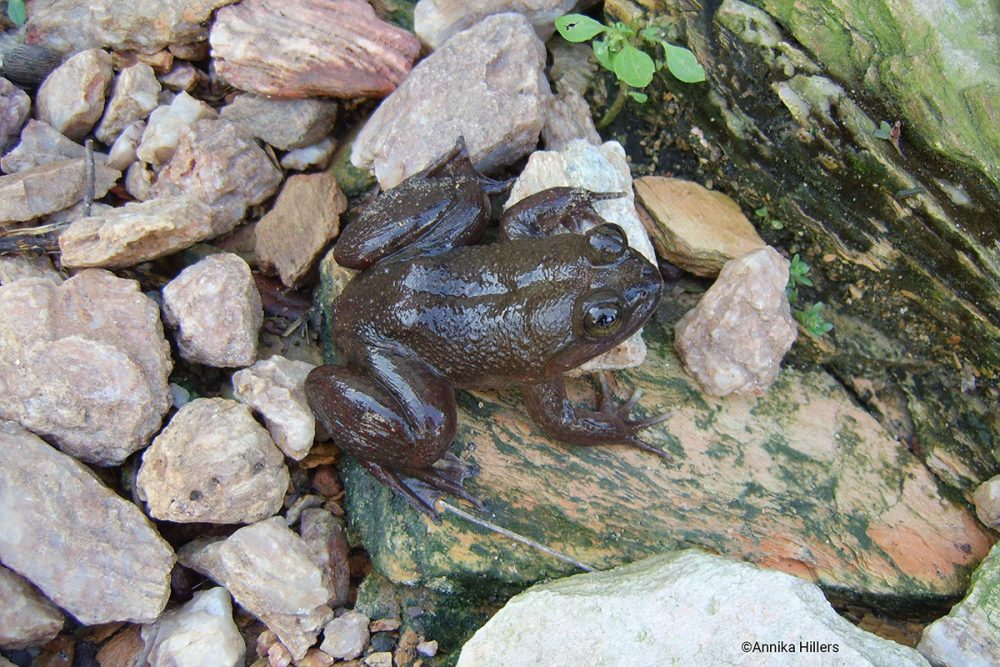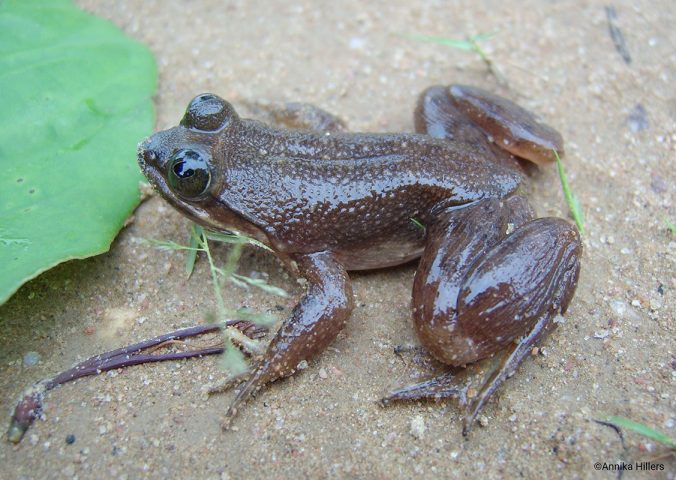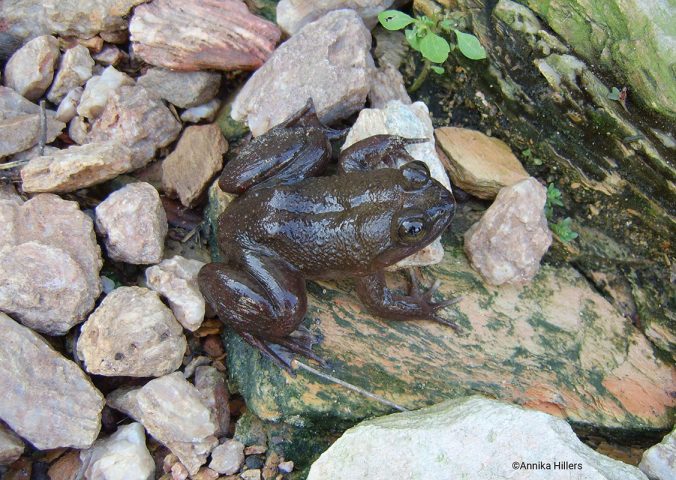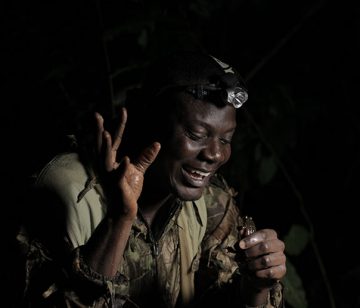About
Reaching moderate sizes of 75-85 mm, it is not immediately obvious that the Togo slippery frog is a close relative of the world’s largest frog, the Goliath frog.
This species is known from the Togo-Volta Highlands along the Ghana-Togo border, and is likely endemic to the region. A recently-discovered population in Central Ghana is now thought to represent a completely different species which is new to science.
The genus (Conraua)to which the Togo slippery frog belongs, along with the world’s largest frog, diverged from all other amphibians over 80 million years ago. This means frogs from this genus are more distantly related to other frogs than bats are to the giant panda!
Most of the forest habitat within the small range of this species has been lost as a result of agricultural expansion, logging, and human settlements. Stream sedimentation may be having an adverse effect on breeding. There are some small protected areas within the range of the species, including Kiabobo National Park in Ghana, but it has not been confirmed from any of these.
- Order: Anura
- Family: Conrauidae
- Trend: decreasing
- Size: 74-84mm
EDGE Score
Distribution
The species is likely to be endemic to the Togo-Volta Highlands of eastern Ghana and western Togo.
Habitat and Ecology
This species is forest dependent, living near fast-flowing water. The tadpoles develop in streams. The males have been found to lack mating calls.







